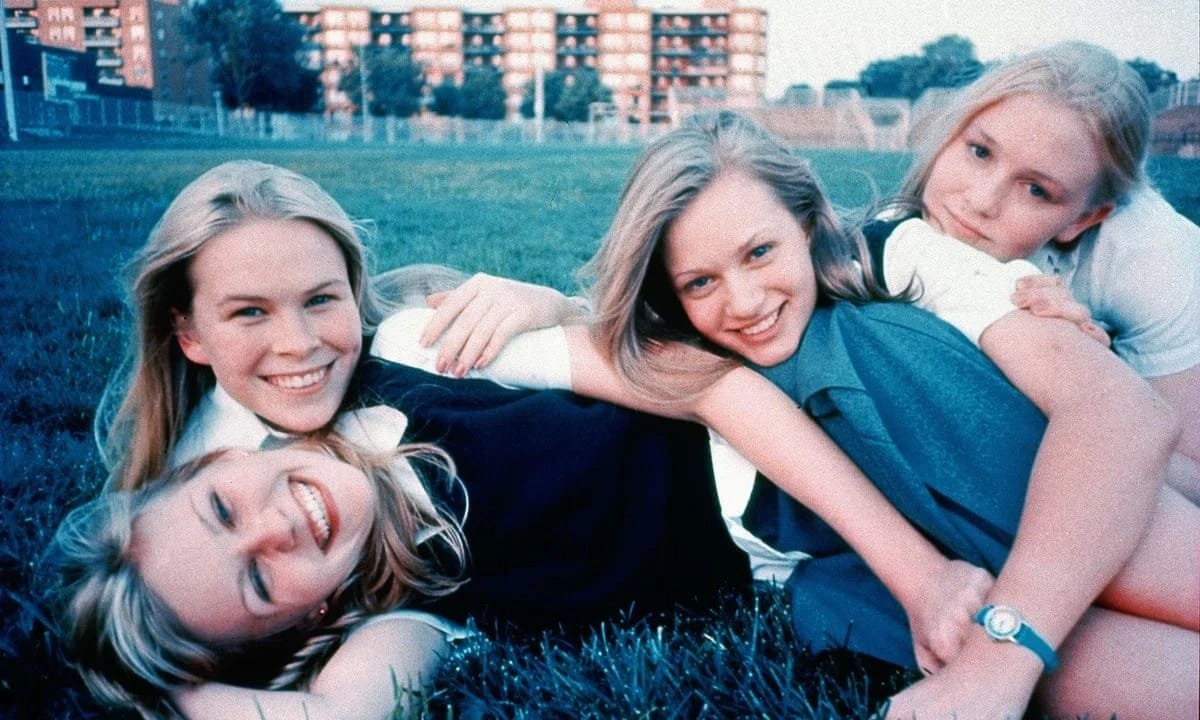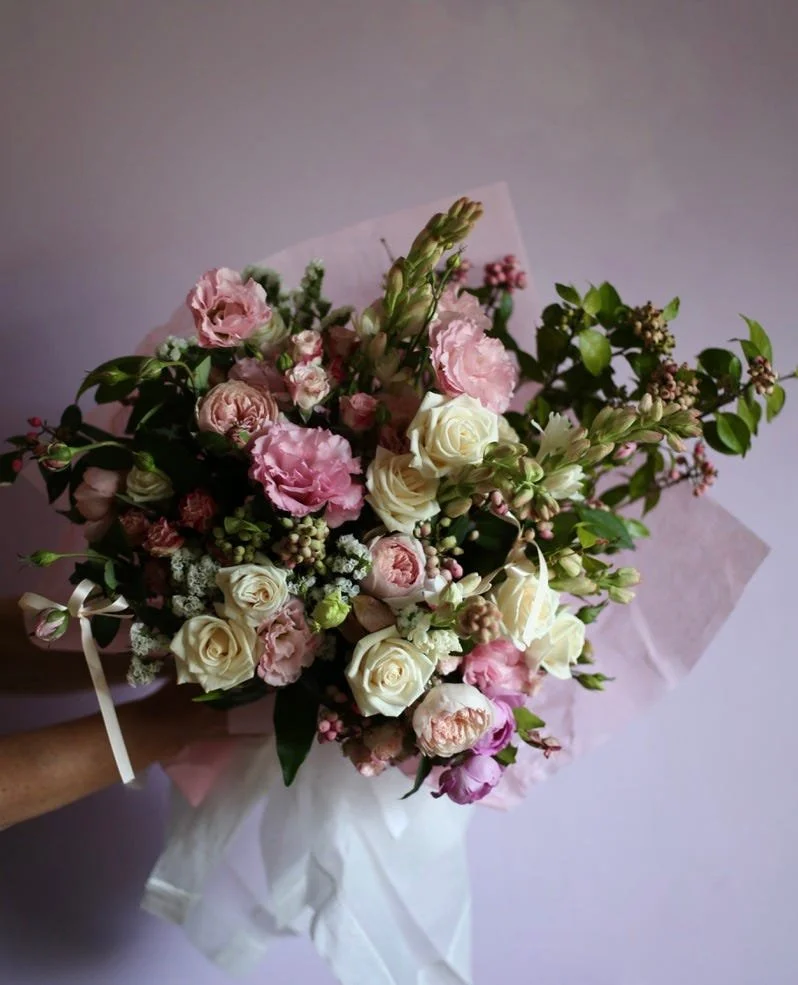Gilded Girlhood and Ephemeral Spirits: A ‘The Virgin Suicides’ Inspired Bouquet
“He came back to us with stories of bedrooms filled with crumpled panties, of stuffed animals hugged to death by the passion of the girls, of a crucifix draped with a brassiere, of gauzy chambers of canopied beds, and of the effluvia of so many young girls becoming women together in the same cramped space”
Jeffrey Eugenides, The Virgin Suicides
When I first read Eugenides’ The Virgin Suicides, I conjured the image of the Lisbon girls and their sphere of rock records, tattered books, embellished diaries and pink bedrooms vividly. They were the sort of images that reveal themselves only in literature written so omnisciently as this, where everyone is a spectator. We see them through the lens of a group of boys who seem to have dedicated their life to figuring out the mystery that was the Lisbon sisters, but could never, and still can never get quite close enough. Each of them live through haunting memories of the sisters who passed through their lives as fleetingly as they left them, leaving scents of hypnotic tuberose and stains of ecstatic momentary encounters on their collars before disappearing entirely from their worlds. The book is a plight to understand who the girls were and why each of them took their own lives. In the process of gathering information through scraps of memories and vignettes of late-night window watching, the reader too becomes infatuated with the girls, or rather, the idea of them.
Sofia Coppola’s 1999 film adaptation of The Virgin Suicides
The female is forever the artist’s muse. Whether a girl in her adolescence, plucked from the carefree innocence of her childhood youth, or the evolved adult woman shifting through the harsh world in a delicate dress. Why are girls so enchanting? Why is it that so often they are a secret to unveil, a prospect of passion, a threat to power. Or is it that the idea of a woman is the enchanting part: the detached seduction of beauty, authority and sensitivity wafting under the noses of spectators like the warm smell of melting chocolate, begging to be consumed. The more I read about the Lisbon sisters, the more it became clear to me that the infatuation of them held by the boys was mostly just an infatuation with their potential. The moment where this becomes most clear is perhaps when Lux is deserted in a park by Skip after he has sex with her. After this point, it’s impossible to negate the theory that if the boys got what they wanted from the girls, they would have stopped the chase to understand them truely. Girls are always ghosts, even if they don’t actually die.
“We did however, read the coroners report, written in a colourful style that made the girls’ deaths as unreal as the news. He spoke of the incredible cleanliness of the girls’ bodies, the youngest he had ever worked on… In older people, or the chronically ill, the organs tend to lose their shape, to distend, change colour, grow connections with organs they have nothing to do with, so that most entrails look, as the coroner put it, ‘Like a rubbish dump’. The Lisbon girls, on the other hand, were ‘like something behind glass. Like an exhibit.’”
As morbid in parts as the book might be, it is masked by beautiful prose that floats seamlessly in and out of memories, pictures and visions of the spectral sisters. Eugenides speaks of the girls as though through a perpetual haze of teenage smells: perfume, growing odours, the smell of warm bodies, the stuffy smells of being contained in tight spaces for long periods of time, and the billowing smell of layered lace and linen. They are described down to the details of their skin and the glints of their eyes. They are compared to one another, analysed like wild creatures in an enclosure. Their worlds are rose-coloured. Their bedrooms are pink and scattered with relics of their youth: religious paraphenellia, tampons, lipsticks, blushes and brushes, hair removal creams, deodorants, cigarettes, tangled jewellery, undergarments labelled with the names of various boys, tarot cards and nail polish. They are messy but simple, endearing and tantalising, sweet, charming and doomed.
I wanted to create a bouquet that would reflect the colours, flavours and fragrances of the girls. I imagined what it means to be a girl, and to embrace girlhood, and how femininity is represented through various shades of pastel pinks, purples and whites. I thought about who I am as a girl, and what that looks like in my life. I was very deliberate with my choice of flowers. I wanted to include plenty of roses in different varieties so they appeared wild and as if still growing on the bush. I used fresh tuberoses which gave the bouquet a really lovely, sweet smell. I actually put the bouquet next to my bed for a while and the smell filled my room. I love that- and I imagine that’s how the girls were, filling up every room when they were alive and lingering as a memory in every room forever after their deaths.
I filled it out with some white Statice to break up the roses, and added in the fluffiest pink Lisianthus I could find. These are one of my all time favourite flowers. They look like ruffles on a dress, or a duvet, or the layers of long hair. I also visited my grandparents and cut some fresh Lilly-Pilly foliage from their garden. I think this really made the bouquet. It gave it an element of unruliness that was central to the spirit of the Lisbon sisters. It was also reminiscent of the love that all the girls had for those trees that were being cut down in their neighbourhood. In Sofia Coppola’s 1999 film adaptation of the book, there’s this beautiful image of Cecelia dangling her legs from the branch of the tree in their front yard. I knew I needed a wood-coloured branch of some sort. Finally, I added some small bows, both because I’d imagine them in the hair of the girls or on the collars of their dresses. It’s also a little girly garnish on an otherwise big and boisterous bouquet.
Like I mentioned earlier, I kept the flowers in my room for quite some time after I made them so I could admire them. I think the identity of flowers mimic the identity of the girls. Beautiful but only for a short time, and then once dead, all is left is wilted petals that remind you of the life that was once there. I felt like I was reading the book all over again, embodied by one of the boys, watching the sisters move and breathe. I studied how the shapes looked over candlelight, or sunlight, or darkness, or my bedside lamp. I watched them drink the water in the vase, and droop when it ran out. And then when the smell of the roses wore off and became the stench of decay, I took them away and disposed of them. And now I write this by living through the photos I took of them and the memories I have of them, and I’ll keep thinking about them long after this post and the post after. In the end it didn’t matter how long they had lived, or that they were flowers, but that I loved them.





